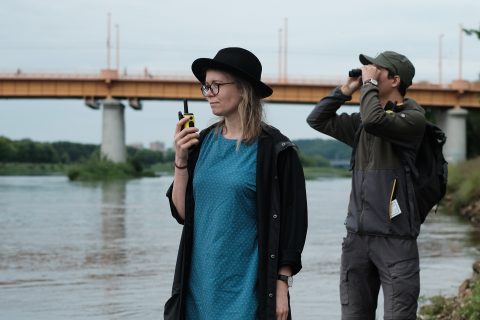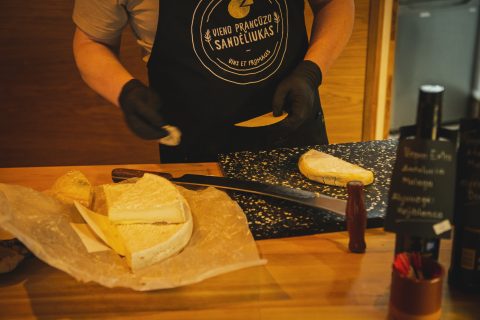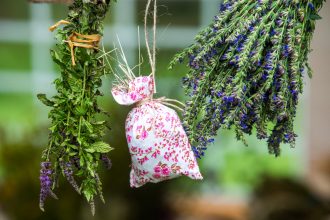In 2021, curious about what else can be done under quarantine conditions, we saw a new tour, “Perfumery, soap and cosmetics industry in the interwar period Kaunas.” It turns out that it was precisely the restrictions of the quarantine that prompted such an idea. Regina Navickienė, the creator of this route and the head of Mūsų odisėja company, which organizes tours and trips around Lithuania as well as guide courses, agreed to tell us more about her discoveries and what today has to be imagined rather than seen with your own eyes or smelled.
She has been working as tour guide since 1986, when she chose this specialization while studying at the Faculty of History of Vilnius University. According to the established order, the young specialist was appointed to Kaunas. Its Old Town R. Navickienė knows like the back of her hand. However, she assures that she still gets nervous before every tour, like an actress before a premiere.
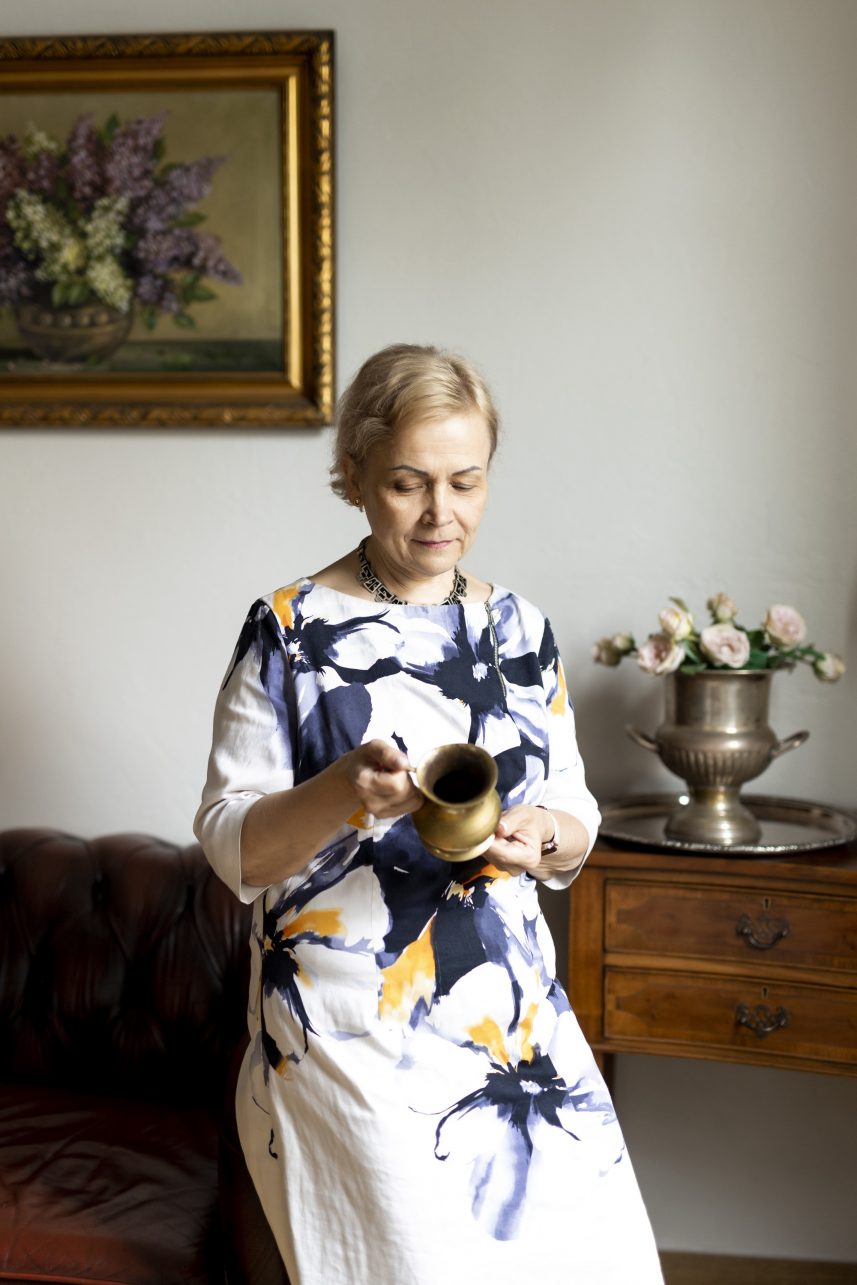
“The beginning of the temporary capital’s beauty and fragrance industry is associated with the need for self-produced cleaning and hygiene products and the development of the soap industry. Kaunas inherited two soap factories – S. Vislickis company and Marsel – from the time when it was part of the Tsarist Russia. During the interwar period, when these factories were in operation and several others were established, Kaunas became the centre of the Lithuanian soap industry. … During the tour around the Old Town of Kaunas, we will use our imagination and try to smell the Lithuanian perfume Lilas de Lithuanie, to understand the abundance and variety of perfumery/cosmetics produced in the interwar period, and to imagine the volume of soap production and the very factories that no longer exist today,” this is how the route that requires an individual booking is presented on Mūsų odisėjos website.
Regina, why did you decide to organize such a themed tour of the interwar period soap industry?
First of all, I would blame covid. Tourism stopped, no one could come from abroad. And Kaunas was preparing to become the European capital of culture. We started looking at what we are most proud of here: ah, the interwar period! So, what new and interesting could we create? There were already many architectural routes, one to do with diplomatic missions and food… What else was there in Kaunas between the wars? We have refined two ideas; one is still waiting for the light of day. After all, the Lithuanian circus was born in Kaunas! We even have a pantheon of circus artists in the Eiguliai cemetery. So, we want to create an entertaining route that fills the participants with good emotions. People these days prefer easier walks that are not too long and last up to several hours. Of course, I still want to introduce as many interesting facts as possible, even if I have to do it in a simpler manner – I want to create a unique experience. Maybe a guide could even swallow a sword during the tour?
So, this is all I can tell you about my first idea. The second was born out of interest in agricultural exhibitions that have been organized since 1921. We learned that soap manufacturers actively participated in them. We got hooked and found all kinds of articles. It turns out that they even created sculptures from soap. For Vytautas’ anniversary, for example. Laboratories were established, which means that business was responsible, based on science. Sanitas was the first to distribute samples at exhibitions and stores. For example, you come to buy pantyhose, you get cream samples. Well, it became interesting where those factories were located. And half of the Lithuanian ones were operating in Kaunas at the time. I also involved my students in preparing the route. An employee of the Kaunas County Public Library, historian Alvydas Surblys, who delved a lot into this topic, helped us a lot. It was unclear to me where certain factories operated. For example, one source said that the factory was located where Kauno Dokas now stands, near the Neris. It turns out that it actually stood on the opposite side of the street, right after the Pilies roundabout. That’s what we decided because nothing was found during the excavation, when the business centre was being built, and in general, it would not have been very convenient to build it near the river with floods and all.
People used to wash their hair with kerosene to kill lice. But, of course, it smelled terrible.
Although it started with soap, it soon became clear that the same factories also produced creams, powders, and lipsticks. Of course, perhaps the most famous product of the interwar period was the soap named after Kipras Petrauskas, an opera singer who lived in Žaliakalnis. It seems to me that his phenomenon is based on that. He was extremely famous and talented and yet close to the people, taking walks in Laisvės Avenue. If you will use his soap maybe, you will be like that too. The scent for that soap was made in France, according to a special formula. Some time ago, the museum employees of Mikas and Kipras Petrauskas House Museum took the fragrance formula to France, and it was recreated there, but the cost was huge, higher than the one of modern scents. And how did that soap smell? There was definitely lavender, cardamom, clove – it was quite a masculine aroma.
I have also read about the Lithuanian, Kaunas-related perfume Lilas de Lituanie, produced at the Florance factory.
Yes, they were very popular. Expensive, but still accessible to many. They say that it was from Lithuanian lilacs. But I talked to perfumers, and they said that lilacs cannot accumulate enough essential oils due to Lithuanian weather conditions, when there’s not enough sun and the winters are cold. Thus, the specialists of today, highly doubt that this could have been the case. Now, summers are hotter and longer, yet it is still impossible. Could this have been eau de toilet? Yes, but probably not perfume. Perhaps, if the essence for Kipras Petraukas was transported from France, this could have been brought over too.
By the way, perfumes were poured into very beautiful bottles. I would guess they were imported. Curiously, the bottle was reusable, it wasn’t thrown away. Even if Lilas de Lituanie was too expensive, women would fill the bottle with something simpler. As long as the guests could see such a bottle on the shelf.

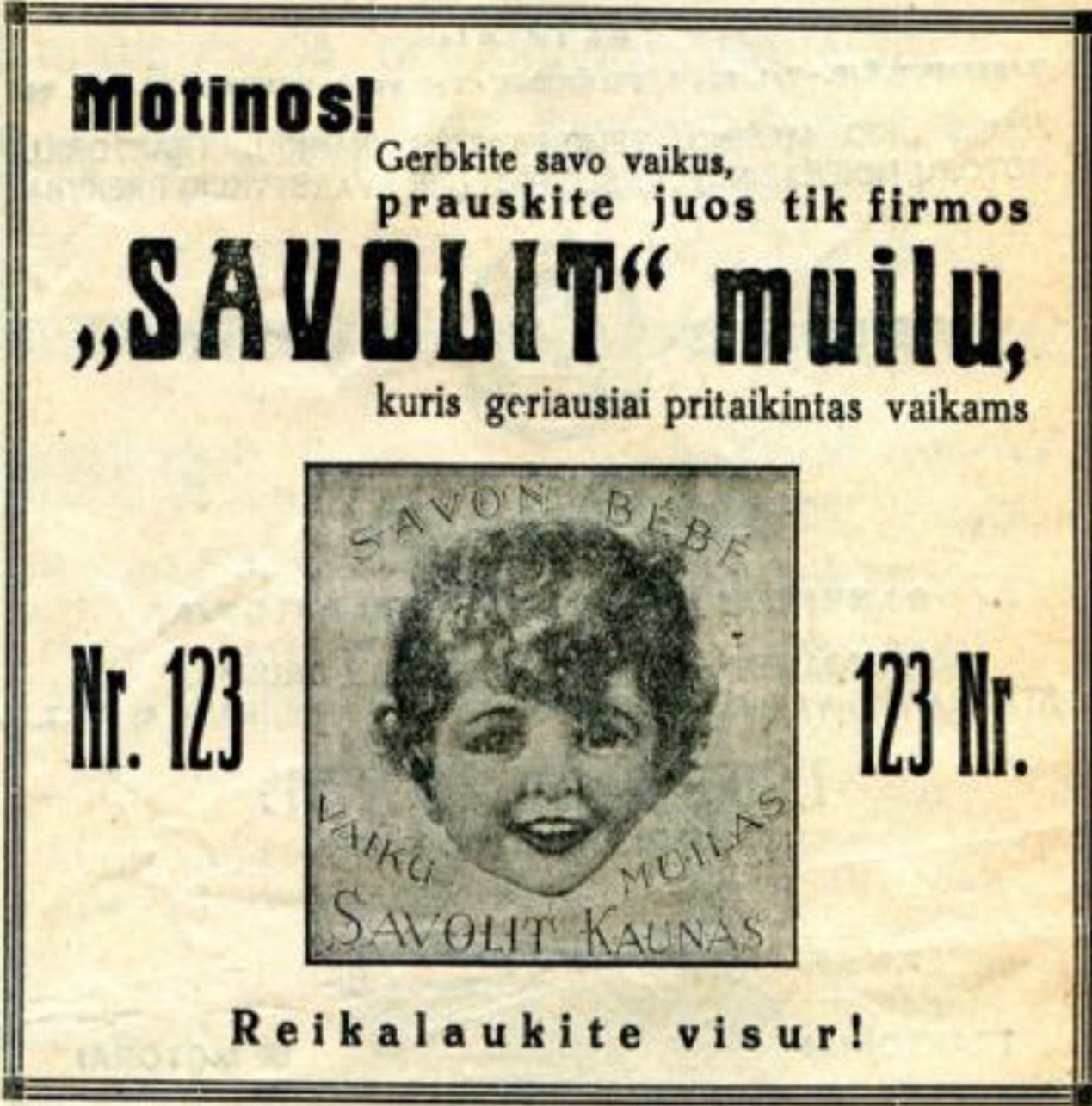
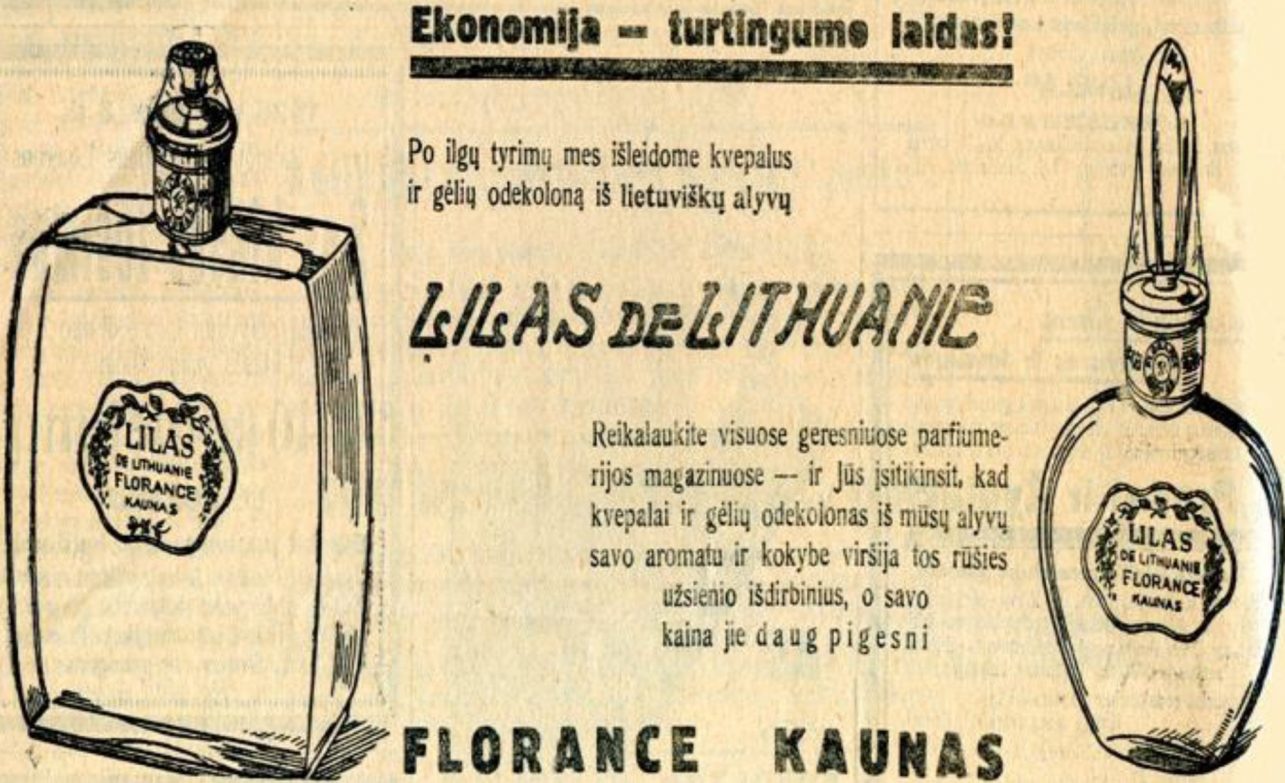
Was there a big competition between manufacturers? Well, if they even used marketing tricks.
Quite big. But it was a market that hadn’t existed before. I would compare it with electric cars. After all, soap used to be made from animal fat, lye and ashes. The fact that soap could have a pleasant smell was a novelty. And advertising was very important here – it was necessary to convince people that bathing is necessary. A person’s culture can be judged by the amount of soap they consume, it was said.
As we understand, Kaunas did not smell very good before the factories flourished. But in the description of your tour, we found the recipe for perhaps the first Lithuania-related perfume. It writes that in the February of 1551, a few months before Barbora Radvilaitė’s death, the pharmacist F. Carborto made perfume for her according to the prescription of a Polish doctor, designed to kill the smell of a sick body.
Yes, but this has to do more with the Grand Duchy of Lithuania rather than Kaunas. But I put the recipe, which contains cloves, aloe, nutmeg, musk, cardamom and lavender water in order to paint a broader historical picture. But, speaking of Kaunas, even in the times closer to us, yes, washing wasn’t a part of the culture, not to mention scented soaps. In general, soap was used more for washing clothes.
Was there such a phenomenon as the counterfeiting of fashionable but expensive fragrances during the interwar period? Now these are called analogues.
I don’t know exactly, at least I haven’t read about cases where someone was convicted for this. But advertisements often emphasized that people should beware of fakes and taught how to distinguish between the fake one and the original. Hence, there must have been soap counterfeiters. I doubt they could counterfeit perfume because it was truly a complex thing to produce but the production cost of soap was relatively small compared to the price. That’s why there were so many factories: the business was good.
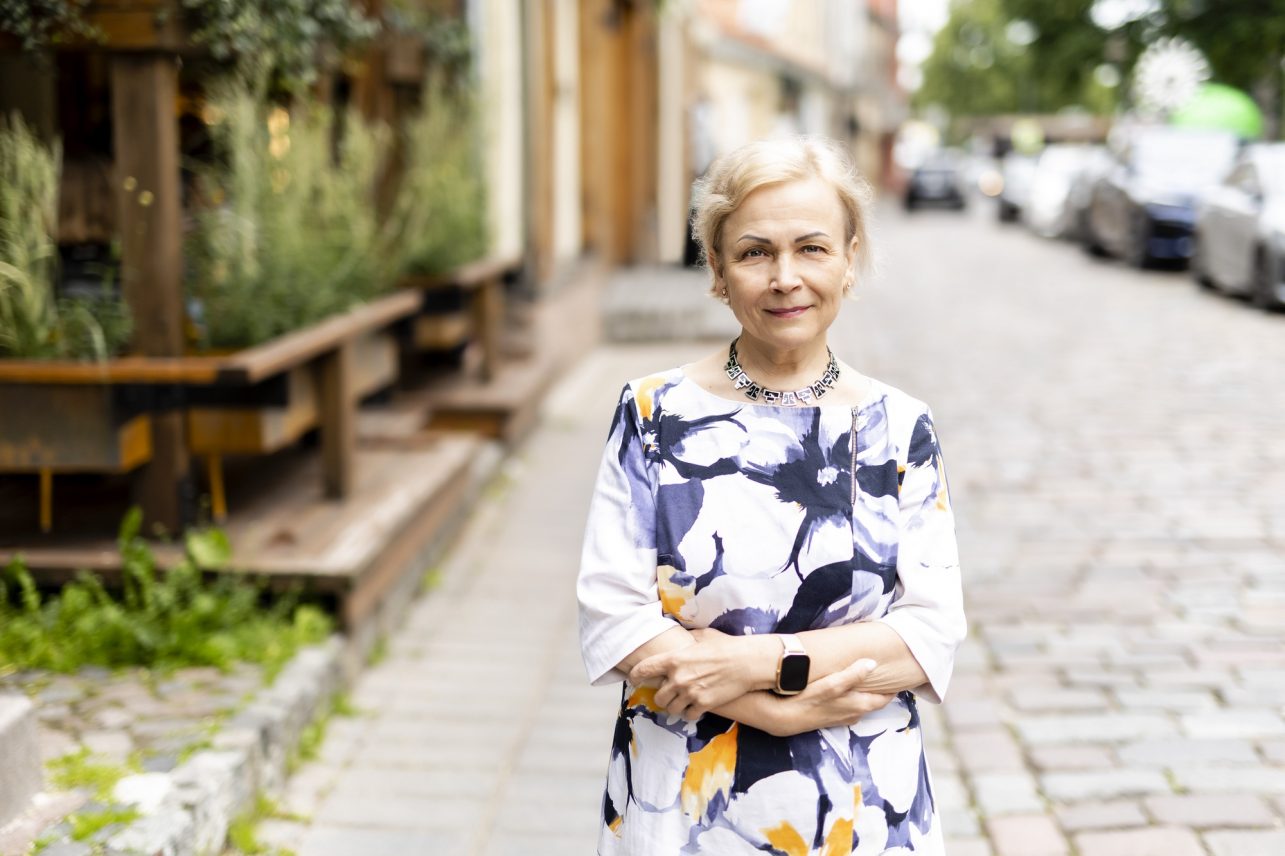
As you mentioned, this tour is such that you often have to close your eyes and imagine. But is there at least one factory building still standing?
The cellars of several buildings have survived. On Pilies St. 2 the buildings are new, but the cellars are still ancient. One of the soap and cosmetics laboratories was located here. They made toothpaste and shaving creams. I also show people the kerosene station on M. Valančius Street. I think it is related to this topic, after all, people used to wash their hair with kerosene to kill lice. But, of course, it smelled terrible.
And what kind of perfume do you like?
Currently, I love the ones produced by Sisley. I have and use the fruity smell called Soir de Lune and an oriental scent Soir d’Orient. I love them a lot! In general, perfume is very important to me. I rarely work as guide now; I have other activities. So, either the client must be important, or it must be very interesting and meaningful to me. I offered the tour for Ukrainians free of charge and if I do it for a fee then I tell myself, “There, I have already earned half of the perfume bottle.” I invest all the extra money in perfumes and books.

